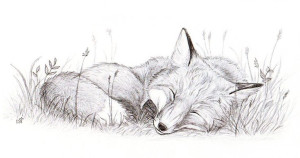 While our Kinrowan Hall is justly famous for the music that keeps the old place resonating nicely, we’re also home to a fair number of our feline friends. While some of the cats just come and go (not unlike the notoriously peripatetic musicians of The Neverending Session), there are a select few who’ve taken up permanent residence, albeit sometimes in the cellar while the music’s going on, especially if there’s whistles.
While our Kinrowan Hall is justly famous for the music that keeps the old place resonating nicely, we’re also home to a fair number of our feline friends. While some of the cats just come and go (not unlike the notoriously peripatetic musicians of The Neverending Session), there are a select few who’ve taken up permanent residence, albeit sometimes in the cellar while the music’s going on, especially if there’s whistles.
Collectively they’re generally known simply as ‘the cats’ (original, huh?), but we figured that it was time to introduce them to you; it’s usually polite — and politic — to greet a cat by name (using his or her sensible, everyday name, or at the very least using ‘Sir’ or ‘Madam’), and one often comes across one of our feline inhabitants in one nook or other around the Building.
So, Ladies and Gentlemen, meet the moggies . . .
First up is Ysbaddaden (‘King of all Giants’ from the story of Culhwch & Olwen), who’s sometimes affectionately known as ‘Bad Daddy’ by the human staff. He’s the alpha tom of the place, and you mainly find him guarding the gardens, or stalking the great hall. He’s probably tortoiseshell, but it’s difficult to be entirely sure given the amount of ‘markings’ that he’s picked up over his long life of battles. Fiercely loyal and protective towards the other cats, he still packs a hell of a wallop and a frightening turn of speed for an old ‘un!
Didjan is a smaller-than-average tabby female, probably the runt of her litter. Something of an outsider, ‘Didjie’ somehow manages to thrive on any food scraps left unattended for more than a second by the others — and occasionally the inattentive human as well. She can generally be found in the windows of the kitchen passageways. Both feline and human rumours of her forming an unholy alliance with Maggie Pye are probably completely accurate. . . . (A ‘didjan’ is a morsel of food — the bit of pasty crust that the dirty fingers hold, left by Cornish tin miners to appease the ‘buccas’ in the ‘bal’ (mine).
Phynnoderee is a very sleek, black Manx tom cat. ‘Finn’ is of the ‘rumpy’ (no tail) rather than the ‘stumpy’ variety of Manx, and seems rather proud of the fact. He’s hugely popular with the she-cats (which may explain the high percentage of oddly-tailed kittens mewling around underfoot.) He can often be spotted in the Reading Room, on some high spot overlooking his domain.
Wattie mysteriously arrived as a kitten in the Green Man cellars, shortly after a touring Scots band (friends of Our Jack) stored their flight cases down there . . . Growing up to be quite burly, his indescribably long and shaggy ginger fur means that he’s sometimes known as ‘that orange brute.’ Wattie has claws like claymores, and pursues his favourite sport of ‘moosing’ in the storerooms with an intensity that borders on the psychopathic.
Maddy and June (aka The Silly Sisters), are two tabby females, very alike, and usually seen together. June is the slightly larger of the two and is distinguishable by the white patch below her neck. Maddy is probably the wilder-natured cat (and has been known to bear a few ginger kittens). One stumbles across them gamboling together wherever their fancy takes them.
Blodeuwedd is the youngest of the females. Denise found her by the Green Man entrance, hiding among the flowers (in a hanging basket, strangely), and invited her in for a saucer of milk. While ‘Blod’ co-exists quite happily with the other cats, she frequently seeks the company of humans in the offices of the building, and has the unnerving ability to magically appear on desks like a very sudden Cheshire Cat.
Maeve is a splendid and stately black and white female of indeterminate age; she’s at least as old as Ysbaddaden, who she’s clearly known from kittenhood. Largely sedate and inactive these days, and usually to be found on the velvet cushions of the second floor landing window seat where proper homage may be paid to her when one goes past, when Maeve does go for a stroll, she does so as queen of all that she surveys. Though well past breeding age, Maeve will still (when no ‘prying eyes’ of the younger cats are about) invite Ysbaddaden to assist her with her grooming.
Cats, underfoot and in unexpected places, skulking in the cellars, haunting the hems of the drapes, purring to themselves on sunny windowsills, licking each other’s ears before the fires, and, while you’re reading this edition of the Review, probably draping themselves over your reading material. It’s in their nature.
